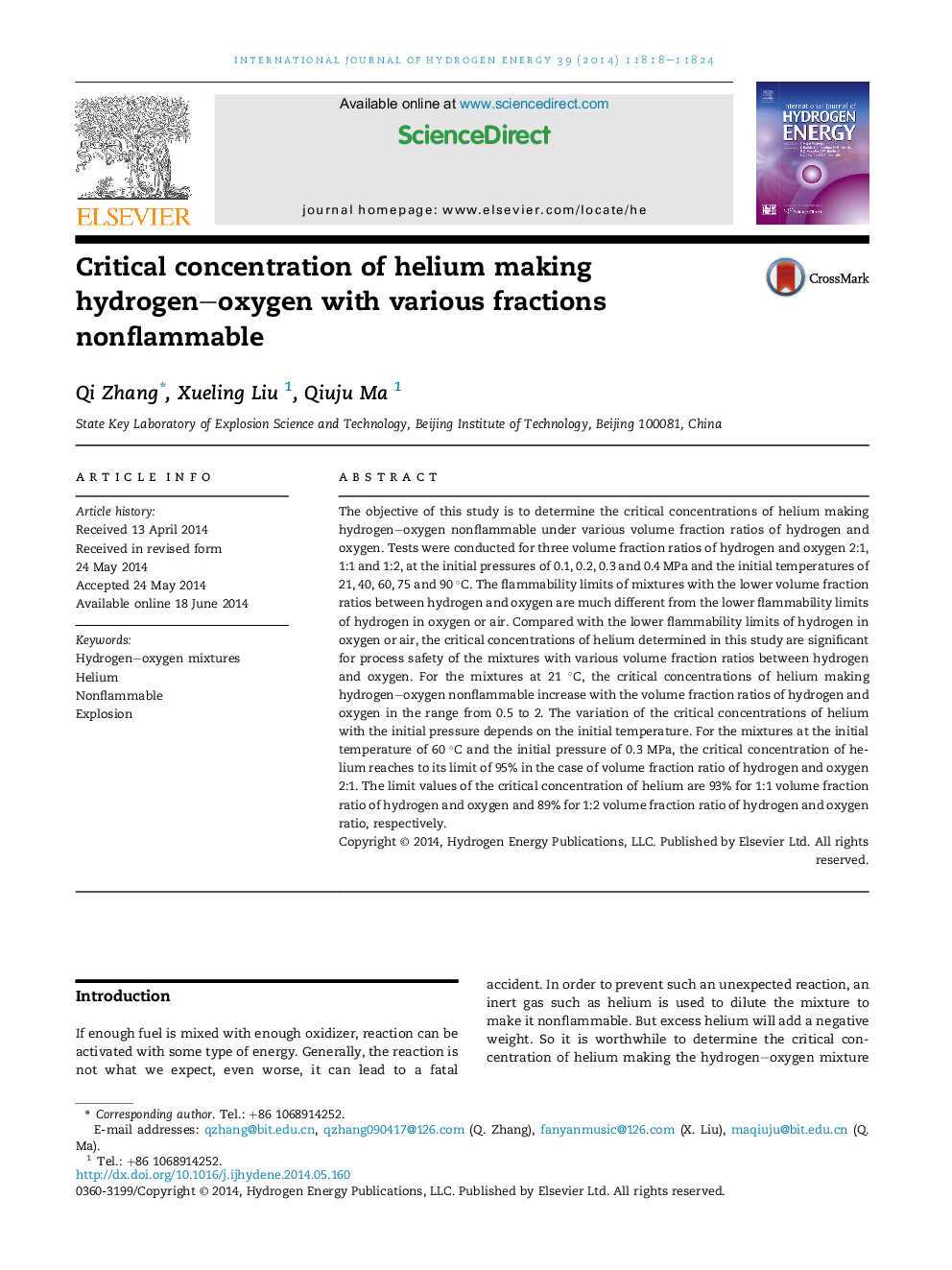| Article ID | Journal | Published Year | Pages | File Type |
|---|---|---|---|---|
| 1273204 | International Journal of Hydrogen Energy | 2014 | 7 Pages |
•Model predicting flammability limits at various initial pressures was created.•FLs of mixtures with lower H2/O2 ratios are different from LFLs of hydrogen in oxygen or air.•Critical concentrations of helium increase with H2/O2 ratio from 0.5 to 2 for mixture at 21 °C.•Critical concentrations of helium increase with initial pressure from 0.1 to 0.4 MPa for mixture at 21 °C.•Critical concentrations of helium tend to its limit of 95% at 2:1 H2/O2 ratio and 60 °C and 0.3 MPa.
The objective of this study is to determine the critical concentrations of helium making hydrogen–oxygen nonflammable under various volume fraction ratios of hydrogen and oxygen. Tests were conducted for three volume fraction ratios of hydrogen and oxygen 2:1, 1:1 and 1:2, at the initial pressures of 0.1, 0.2, 0.3 and 0.4 MPa and the initial temperatures of 21, 40, 60, 75 and 90 °C. The flammability limits of mixtures with the lower volume fraction ratios between hydrogen and oxygen are much different from the lower flammability limits of hydrogen in oxygen or air. Compared with the lower flammability limits of hydrogen in oxygen or air, the critical concentrations of helium determined in this study are significant for process safety of the mixtures with various volume fraction ratios between hydrogen and oxygen. For the mixtures at 21 °C, the critical concentrations of helium making hydrogen–oxygen nonflammable increase with the volume fraction ratios of hydrogen and oxygen in the range from 0.5 to 2. The variation of the critical concentrations of helium with the initial pressure depends on the initial temperature. For the mixtures at the initial temperature of 60 °C and the initial pressure of 0.3 MPa, the critical concentration of helium reaches to its limit of 95% in the case of volume fraction ratio of hydrogen and oxygen 2:1. The limit values of the critical concentration of helium are 93% for 1:1 volume fraction ratio of hydrogen and oxygen and 89% for 1:2 volume fraction ratio of hydrogen and oxygen ratio, respectively.
